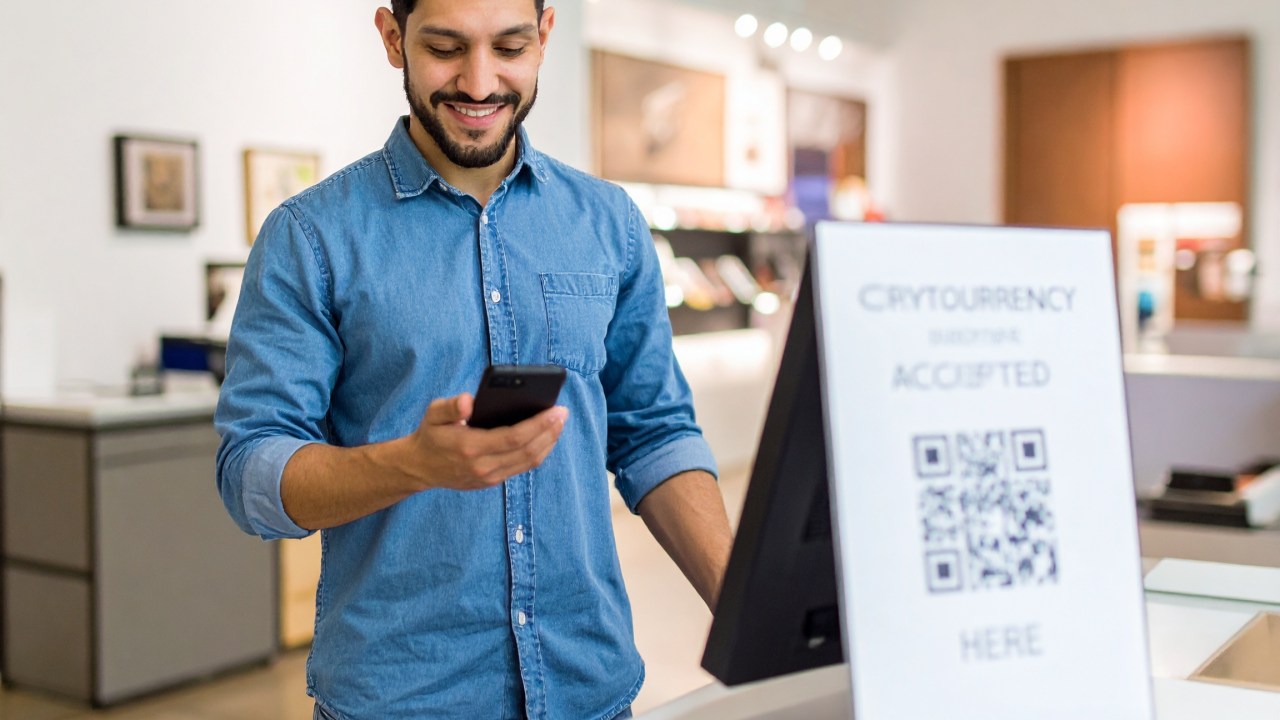
Today’s post exemplifies the service the Center for the Future of Museums provides to the museum people: helping you stay abreast of emerging trends, understand the implications of significant events (in this case, legislation), and factor this information into your organization’s work. I began writing about blockchain and its implications for museum practice in 2018. Today I dig into some of the ways it is beginning to have mainstream, practical implications for museum finances. By following CFM’s work here on the blog, via Dispatches from the Future of Museums and our annual TrendsWatch reports, you can integrate this foresight into your planning and operations, ensuring your organization is positioned to thrive in coming decades.
Yours from the future,

Elizabeth Merritt, VP Strategic Foresight and Founding Director, Center for the Future of Museums, American Alliance of Museums
On July 18, President Trump signed the GENIUS Act into law. “Genius” stands for “Guiding and Establishing National Innovation for U.S. Stablecoin,” and the act is expected to accelerate the use of cryptocurrency. This may have several significant implications for museums, notably savings on credit card fees, and potential growth in cryptophilanthropy. More on those points below.
But First, a Primer
“Cryptocurrency” refers to monetized tokens tracked and transferred via blockchain. (Here’s the CFM primer on blockchain. TLDR version: blockchain is a “digital ledger” that stores records of transactions across a distributed network of computers, using digital encryption to protect and authenticate each record.) While the transactions being recorded can involve any physical or digital item, the economy of blockchain development rests on cryptocurrency—digital assets with a real-world financial value.
There are many bespoke cryptocurrencies (e.g., Bitcoin, Etherium, Dogecoin) issued by private companies or individuals. They are essentially de novo systems of finance which establish their value by regulating the amount of currency in circulation. (Why does it have value? Well, why do baseball cards have value, or Monets? Because a large enough group of people buy into the proposition.) Up to this point, trading and investing in cryptocurrency have been high-risk endeavors, as the value of any currency has fluctuated dramatically. According to a study by Lending Tree, in 2023, 28 percent of Americans held or had held some kind of cryptocurrency, but more investors (38 percent) lost money than made money (28 percent) on their trades. Crypto has also suffered from a slightly shady reputation—because the sender and receiver can mask their identities, it has been a popular tool for money laundering, evading financial sanctions, bribery, embezzlement, and extortion. (Victims of ransomware, for example, are usually directed to pay their attackers in cryptocurrency.)
The lack of regulation of crypto has both allowed it to flourish in the absence of guard rails, but also hindered its growth by contributing to volatility and risk. Yes, you can lose a fortune on the stock market, but at least there are laws that protect investors from fraud and abuse. And the currency of your investments—the US dollar—can fluctuate in value but is grounded in bonds in the federal reserve. Stablecoins are a kind of cryptocurrency that pulls the best of both worlds—they are traded and tracked via the blockchain, with its advantages of privacy, transparency, and absence of transaction fees—and they are tagged to the value of a fiat currency, like the US dollar, reducing their volatility. They offer many advantages to traditional currencies, including allowing instantaneous international transfers without expensive bank or money transfer fees. Users can purchase stablecoins on popular platforms like PayPal and Coinbase, and (at the moment) hold them at interest rates far higher than those offered by banks. However, stablecoins initially suffered from some of the same uncertainties hobbling any cryptocurrency—notably the lack of protection for users.
The GENIUS Act mandates that companies issuing stablecoins must hold sufficient reserves to guarantee the currency they issue (i.e. that they can back each $1 stable coin with $1 US or the equivalent held in a short-term Treasury bill) and creates reporting requirements. It also institutes rules designed to combat money laundering and other illegal uses of the currency. As the use of blockchain grew in the past decade, it began to disrupt traditional gatekeepers of financial and legal transactions, particularly banks, as cryptocurrency allows people to transfer money directly via secure, encrypted channels. Stablecoins are expected to accelerate this process, threatening the business model of traditional payment networks such as credit card companies and wire transfer services.
The actual impacts of GENIUS remain to be seen—while stablecoin deposits will be backed 100 percent by reserves, they still won’t be covered by FDIC insurance, and there may be a steep education curve in persuading more people to adopt blockchain payment systems. There may be significant pushback from the traditional companies whose business models are being disrupted, and there are some concerns about the overall impact on the credit market. However, if projections by CoinGecko are correct, the market for stablecoins could increase from the current $247 billion to $2 trillion by 2028—that kind of financial growth would give the currency considerable momentum.
Why Should Museums Care?
Credit Card Fees
Credit card processing fees typically run 1.5 to 3.5 percent of every transaction. The Federal Reserve Bank of San Francisco reports that in 2022, credit cards were used to make almost a third (31 percent) of all payments. According to Nilson Report, merchants paid $126 billion in credit card fees in 2022, up 20 percent from 2021. I don’t have figures on what museums pay in card fees each year, but informal conversations suggest it can be a significant chunk of income. If museums, along with other retailers, actively encourage customers to pay via cryptocurrency (by preference, lower-risk, regulated stablecoins) they could recapture those fees and increase their earned income. With museum income streams currently being disrupted on so many fronts, every little bit could help.
Resource
This primer from the US Chamber of Commerce outlines how to get ready to accept cryptocurrency payments.
Cryptophilanthropy
Cryptocurrency provides investors with new ways to earn money, and also provides a new avenue for people to give that money away. According to The Giving Block, more than $1 billion in cryptocurrency was donated to charity in 2024, up over 386 percent from 2023, and they project $2.5 billion in crypto-donations in 2025. By 2035, they estimate this might grow to over $89 billion. Seventy percent of Forbes Top 100 Charities accepted crypto-donations last year, a 25 percent increase over 2023. As patterns of giving shift in the US, people who are used to investing and paying via cryptocurrency may prefer to donate in this way as well. Fidelity Charitable reports that Millennials are more likely than GenX or Baby Boomers to say that “charitable giving is a significant or pretty important part of my life,” and are also more likely to consider cryptocurrency to be “a smart investment.” Ninety-five percent of crypto owners they surveyed made charitable contributions in 2021 (compared to 56 percent of Americans overall).
If the Genius Act does significantly spur adoption and growth of cryptocurrency, more funds could flow through cryptophilanthropy, adding another boost to museum income in tough times.
Resource
Demystifying Cryptocurrency Donations: A Guide for Nonprofit Leaders, Nonprofit Financial Commons.
Tracking the Trend
I’ll share stories about the impact stablecoins are having on small businesses and philanthropy via the free weekly e-newsletter Dispatches from the Future of Museums. (Subscribe here, if you don’t already receive Dispatches.) I’d love to hear from staff at museums that are already accepting crypto-payments, and can report on how what it has saved you in credit card fees, or have observations on how crypto-philanthropists are engaging with your institution. Please leave comments on this post, start a thread via the Future of Museums Community on Museum Junction, or email me at emerritt (at) aam-us.org.









Disappointing to see the environmental impacts of crypto being completely overlooked in this article, especially since many aam member organizations have made sustainability commitments.
I don’t think it’s possible to be ‘green’ while supporting (which is implied if museums take those type of payments) an energy intensive financial product.